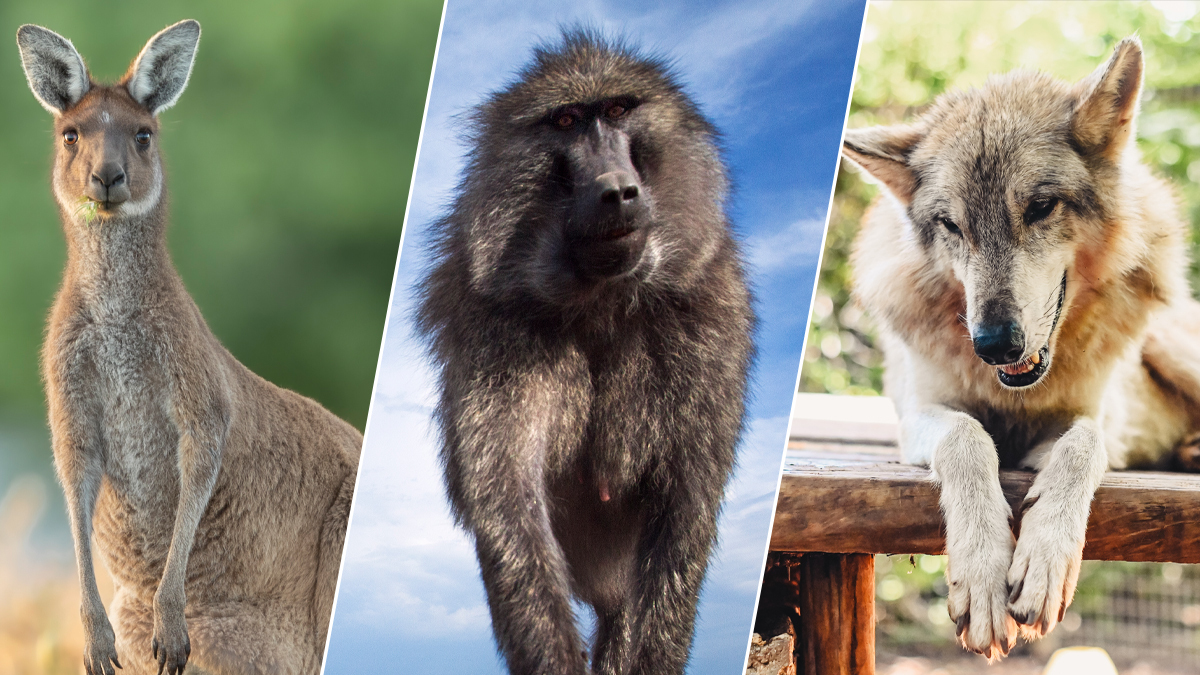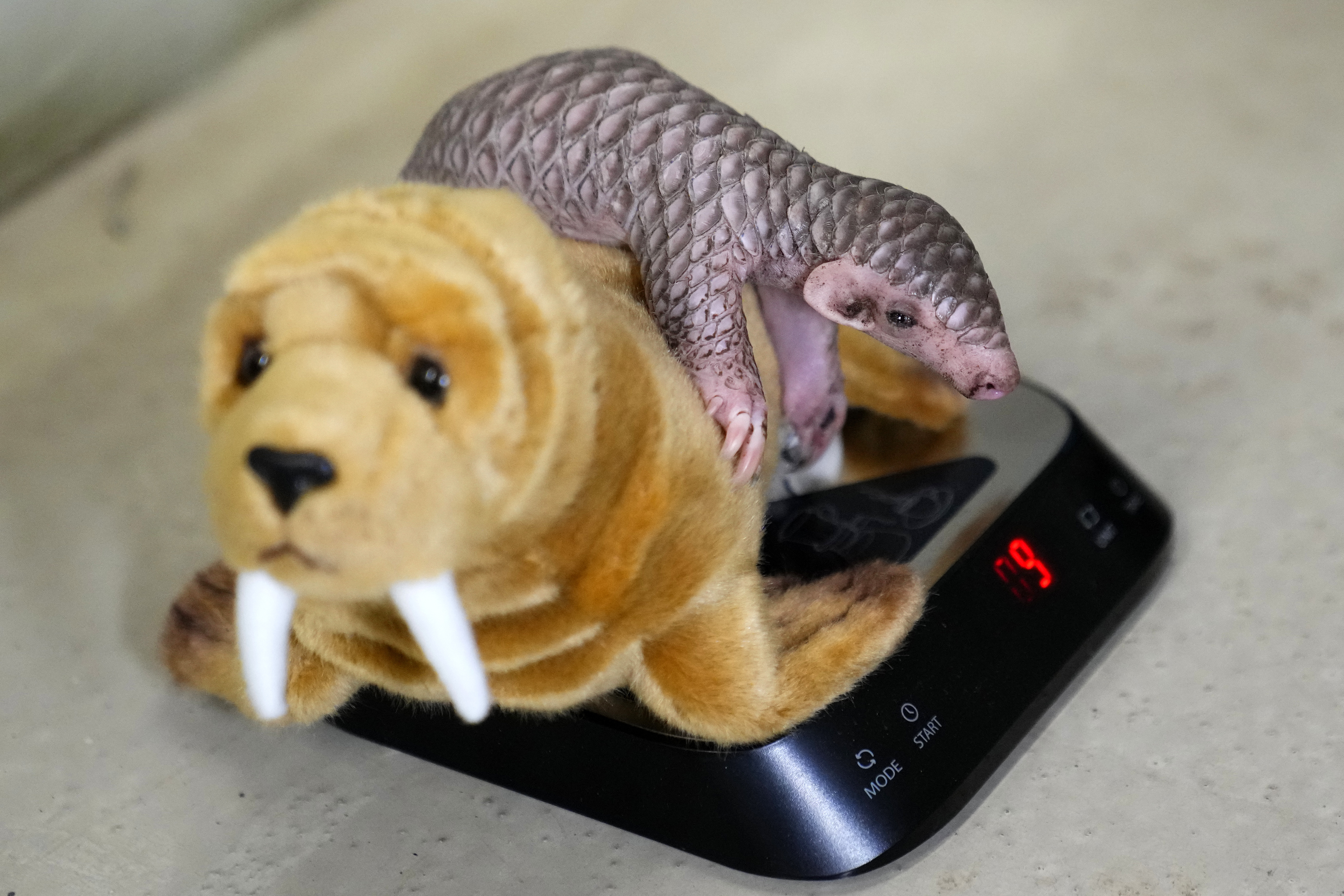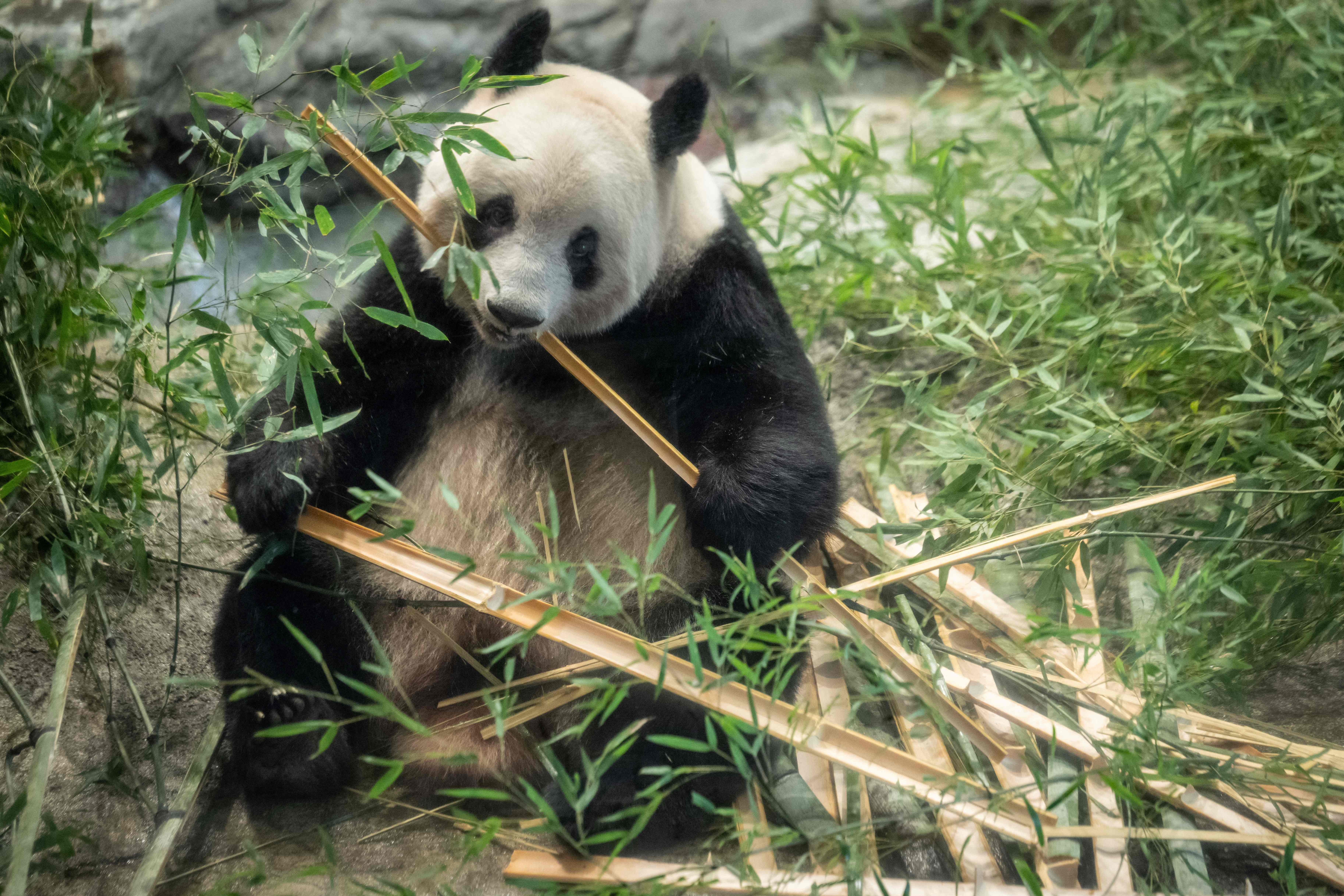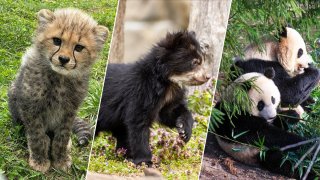
Spring has sprung, and that means it's time for flowers, sunshine and BABY ANIMALS.
The Smithsonian's National Zoo and Nature Conservation Biology Institute is ready, with several new residents who made their debut at the zoo in recent months.
Here are some of the baby animals that call the National Zoo home, and where you can see them.
We've got the news you need to know to start your day. Sign up for the First & 4Most morning newsletter — delivered to your inbox daily. Sign up here.
Andean Bear Cubs
Two Andean bear cubs, Sean and Ian, made their move into public life on March 27. Visitors to the National Zoo in D.C. can now find them in the yard near the the lower entrance to American Trail exhibit.
The cubs were born to 4-year-old mom Brienne and 9-year-old dad Quito on Nov. 15, 2022, and they're the fourth litter of cubs born at the National Zoo since 2010.
Until they went on public view, the cubs spent most of their days inside at the zoo, being monitored by animal care staff via a live camera so the cubs' mom could care for them without interference.
Like most Andean bears, Sean and Ian each have unique face markings that zookeepers and visitors can use to distinguish them from each other when they're running around the exhibit yard.
"Ian has a triangle patch on his forehead similar to his great grandmother Billie Jean’s, while Sean has a hook over his right eye like Quito," a news release from the National Zoo said.
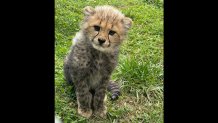
Cheetah Cubs
Back in October, 4-year-old cheetah Amani gave birth to two healthy cheetah cubs: Ziad and Enzi.
Those two cubs aren't in the public areas of the zoo, instead spending most of their time in a den at the Smithsonian’s National Zoo and Conservation Biology Institute’s campus in Front Royal, Virginia. They've slowly started to explore a yard near their den, and the zoo has been sharing #CheetahCubdates on their website alongside a livestream of the den itself.
The most recent update, on March 9, shared the cubs' names and some photos of the two babies gnawing on some meaty snacks. (Horse bones, to be specific. Sorry if you did not want to know this.)
For now, 5-month-old Ziad and Enzi aren't taking visitors in Front Royal. But you can watch their live cam feed and get monthly updates here.
Gorilla Baby Born
Good news for the western lowland gorilla population: the National Zoo’s Calaya has given birth for a second time.
The baby was born at the zoo on Saturday, May 27. Zookeepers have yet to confirm its gender.
Calaya, now 20, first came to the National Zoo from Seattle in 2015. She and 31-year-old male silverback Baraka had a baby boy named Moke in 2018, according to a National Zoo release.
Western lowland gorillas are critically endangered due to habitat loss, disease and poaching. In the wild, they live in the forests of several different African countries, the release said.
“As we prepare to welcome a new western lowland gorilla to our troop, we hope this baby’s impending arrival inspires the public to care about these charismatic, intelligent and fascinating animals,” Becky Malinsky, curator of primates said in a release. “Every new birth contributes to the conservation of this species, as they are critically endangered in the wild.”
The gorillas reside at the Great Ape House open daily from 8 a.m. to 6 p.m. Calaya and her baby will be on exhibit, but also have access to a private area that is unavailable to visitors.
Adopted Elephants
Some of the newest National Zoo babies were adopted into the family from other zoos.
Nhi Linh, a 9-year-old Asian elephant, was brought to the National Zoo with 19-year-old mom Trong Nhi in November, and the two entered public view on Dec. 13.
Female Asian elephants have an average life expectancy of 47 years, and reach maturity between ages 8 and 13. While that means Nhi Linh isn't technically a baby anymore, she's the youngest elephant to call the zoo home.
Nhi Linh and Trong Nhi were both born at the Rotterdam Zoo in the Netherlands, and were given to the National Zoo as a gift. There, they joined the other five elephants at the Elephant Trails exhibit, where visitors can find them in the Elephant Community Center or outdoors exploring their habitat from 10 a.m. to noon daily.
Panda's Summer Birthday
Xiao Qi Ji, the beloved giant panda cub at the National Zoo, turns three in August.
Mom Mei Xiang gave birth to Xiao Qi Ji in August 2020, and the panda cub has been capturing hearts around the District and beyond ever since.
Last year, Xiao Qi Ji celebrated his second birthday with a panda-friendly fruitsicle cake.
Since then, the cub has continued to grow. On March 1, the zoo announced that Xiao Qi Ji has reached a new level of independence and moved into a separate enclosure from Mei Xiang.
It's not yet clear what the National Zoo may be planning for his third birthday this summer, but until then, visitors can find the giant pandas at the David M. Rubenstein Family Giant Panda Habitat.

